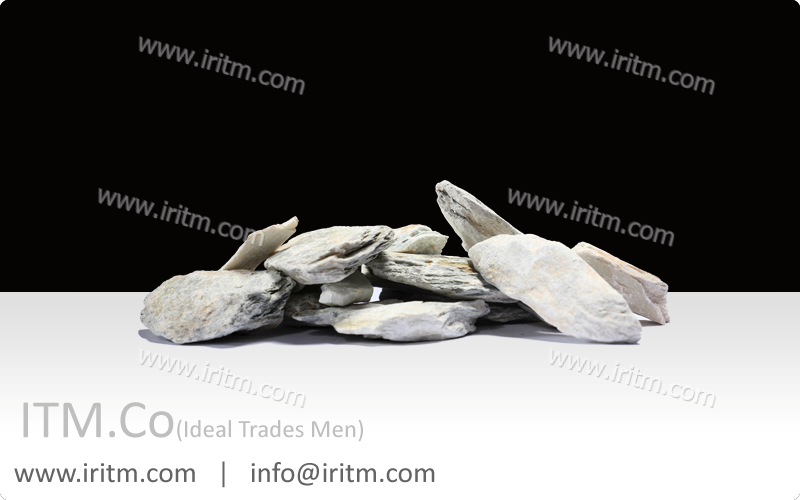Talc
Talc, is mineral ranging in color from white through various shades of gray and green to the red and brown of impure specimens. It is a hydrous silicate of magnesium. Mg 3 is 4o10 (0H) 2 and usually contains small quantities of nickel iron, and aluminum as impurities.
It occurs as foliated to fibrous masses and in and exceptionally rare crystal. Talc can also be formed via a reaction between dolomite and silica.
Formation:
Talc is a metamorphic mineral resulting from the metamorphism of magnesium minerals such as serpentine, pyroxene, amphibole, olivine in the presence of carbon dioxide and water; this is known as talc carbonation.
Talc is a common metamorphic mineral in metamorphic belts which contain ultramafic rocks, such as soapstone (a high talc rock), and within white chits and blue schist metamorphic Terrance.
Useage:
Talc is used in many industries such as paper making, plastic and coatings, rubber, food, electric cable, pharmaceuticals, cosmetics, ceromics, etc.
It is often used for surfaces of lab counter tops and electrical switchboards because of its resistance to heat, electricity and acids.
Talc finds use as a cosmetic (Talcum powder), as a lubricant, and as a filler in paper manufacture.
Talc is used in baby powder.
It is also often used in basketball too keep the players hand dry.
Most tailors the chalk, or French chalk is talk is talc.
Talc is also used as food additive or in pharmaceutical products as a gliding.
Talc is widely used in the ceramics industry in both bodies and glazes. In low-fire art ware bodies it imparts whiteness and increases thermal expansion to resist crazing.




